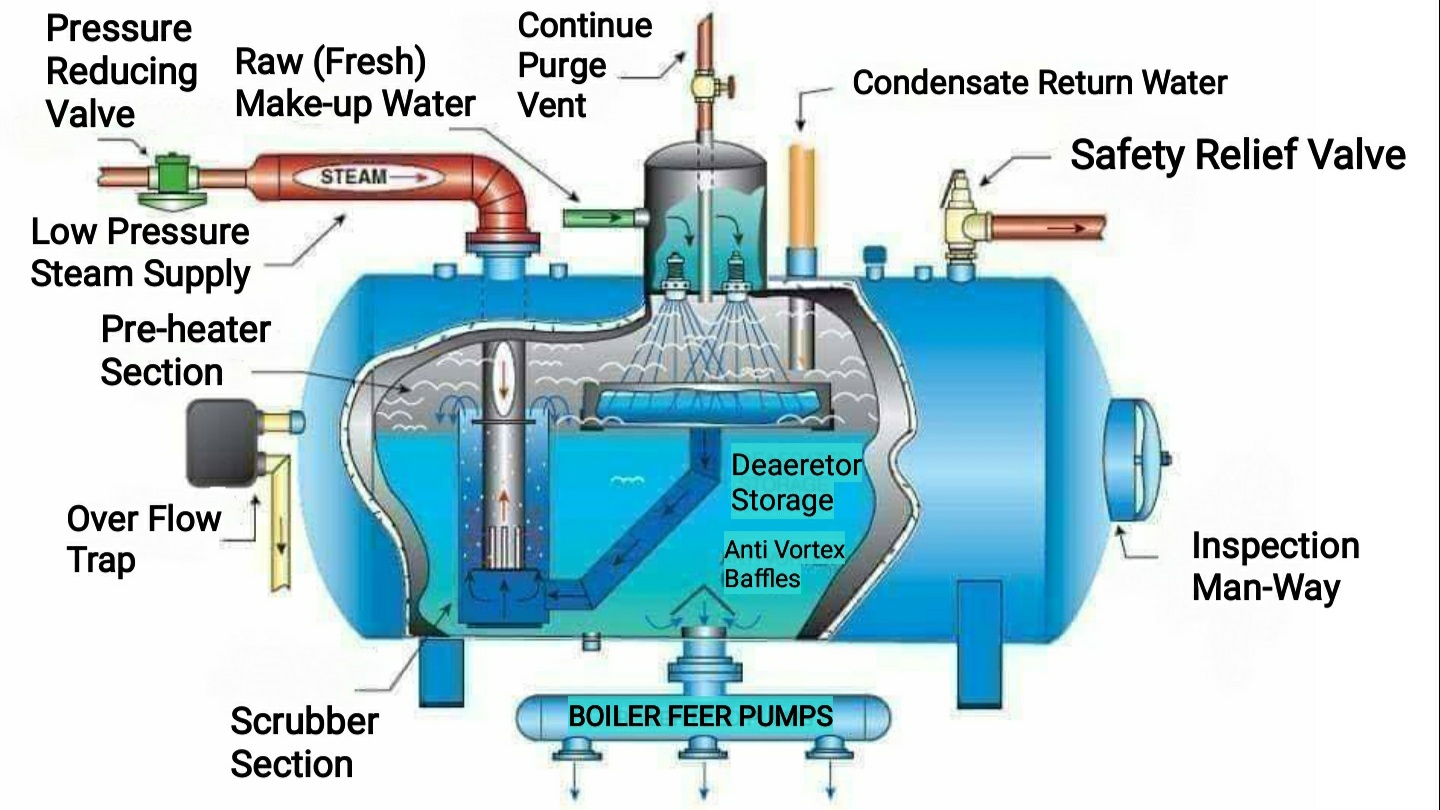Deaerators are normally used in any Chemical Process Industry or in Power Plants where boiler is employed for steam production from boiler feed water. Deaerator solves the purpose of removal of unwanted dissolved gases and dissolved oxygen from the boiler feed water before entering into boilers. Most of the deaerators are designed in such a way that the dissolved oxygen content in the outlet water is about 7 ppb by wt%
Principle of Dearators
Dearator normally works based on the following principles.
Henrys Law
The solubility of the gas in a liquid is directly proportional to the partial pressure. Therefore if we decrease the partial pressure of the dissolved gas by adding steam in Deaerator, its solubility decreases and the gas is removed from water.
Inverse Solubility of Water
When the temperature of water is increased, the dissolved oxygen content in the water is decreases. Therefore the water temperature is increased by adding steam in Deaerator, the dissolved gas solubility is decreased and the gases are removed from water.
Types of Deaerators
Tray type Deaerator
1) Tray Type Deareator
Tray type deaerators contain perforated trays in the top of the Deaeration section. The bottom section acts as storage for boiler feed water. Feed water to deaerator enters into the perforated trays where the surface area and residence time is increased to contact with steam. Then the water goes to the horizontal storage section where steam is passed in sparger pipe to remove the remaining traces of dissolved gases and keep the stored water at its saturation temperature.
Spray Type Deaerator
Spray type deaerator contains spray nozzle in feed water entry area. It is then preheated and deaerated and sent to storage section. In storage section also steam is added to keep the water at its saturation temperature.
Process Control system in Deaerator
Steam Pressure Control
Deaerator uses Low pressure steam from the process plant at a pressure range between 0.5 to 1.5 bar. The low pressure steam sources may be any one of the following: Extraction from back pressure turbines, Flash steam recovered from Boiler blow down or Letdown steam from High pressure steam header through pressure reducing valve. Steam pressure inside the deaerator has to be maintained to facilitate the removal of dissolved gases from water and also to provide adequate NPSH to boiler feed water pump. Deaerators are normally installed at high elevation in order to provide enough NPSH in the event of failure in steam pressure control also. Pressure Relief valve is also fitted to avoid pressurization of deaerator due to malfunctioning of pressure control valve.
Water Level Control
Main sources of water to deaerator are Treated water from water treatment plant and steam condensate from the condensing type turbines. During the stable plant operation the water balance is maintained and during any upset in the above said sources water level fluctuates and control is essential. High level and low level alarms are provided. Low level may lead to starvation of feed water in Centrifugal Pump and High level leads to water entry into steam header. Therefore overflow drain is installed to drain the water if very high level is reached.
Other Advantages of Deaerator
Dearator acts as an additional storage device which provides reserve quantity of boiler feed water during upstream water supply failure for momentary periods normally for about 20 minutes.
In some of the Plants, Deaerator is also used for dosing oxygen scavenging chemicals like Hydrazine or Hydroquinone.
Refreences :
Video Source : POWER PLANT GURU

